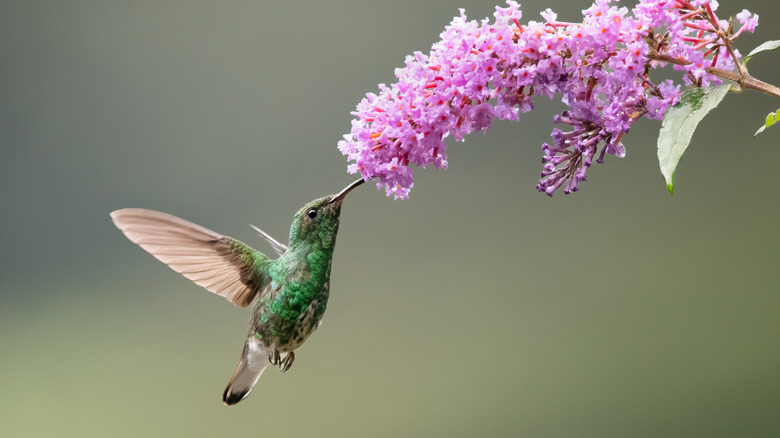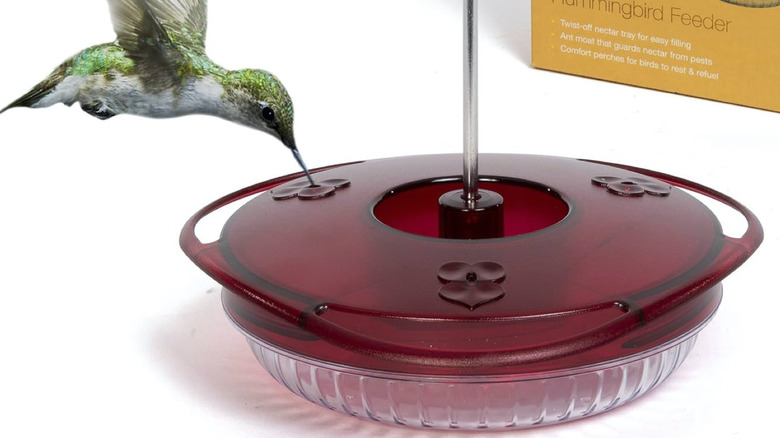The Feeder Style That'll Help Cut The Costs Of Feeding Hummingbirds
We may receive a commission on purchases made from links.
Did you know there's a certain style of bird feeder that will help you better attract hummingbirds? After all, if you're working to get hummingbirds to visit your garden or outdoor space without breaking the bank, the feeder style is really what counts. That's why a dish-style feeder, sometimes called a saucer feeder or pan feeder, can make a surprising difference in your hummingbird setup. Because the reservoir of a dish-style feeder is low and open, you avoid drips, leaks, and the wasted nectar common with hanging upside-down feeders. You're also using less nectar overall, since you're not having to replace it as often, which helps stretch your budget. And if you've followed expert advice like using the one color to instantly invite more hummingbirds to your garden, you'll know that feeder details like this really make a difference.
The simpler the operation of a hummingbird feeder, the easier it is to clean, which is another win for dish-style feeders. Since it has fewer nooks and hidden compartments, you're less likely to end up with the mold or fermentation that ruins your batch of nectar, forcing a full cleanup or replacement. So if you really want to learn how to turn your balcony into a hummingbird oasis, you might want to seriously consider grabbing a dish-style hummingbird feeder over the other available options. With a dish-style feeder, you can give more of your focus (and budget) to the flowers and perches that attract the birds, rather than the feeder itself.
How to switch to a dish-style hummingbird feeder
Begin by selecting a bird feeder that fits the dish-style design. Look for feeders that have a shallow reservoir, feeding ports close to the surface, and minimal dripping or under-feed space, like the Jacobi Jayne Sweet Spot. Next, hang the feeder in a spot that offers some shade and is easily visible from your home. Remember to clean the feeder thoroughly at least once a week, refilling with nectar as needed. Because you're using a more efficient bird-feeding design, you'll soon find you're replacing less liquid over time, and that equals savings. Combine the feeder with bird-friendly plantings of tubular blooms and alluring perches, making sure to keep ants off your hummingbird feeder with two simple ingredients. Now, you've built a full hummingbird-friendly station with minimal spend.
Finally, keep an eye on the feeder's feeding ports and base for any ant trails or wasp attempts. The shallow design works against insect intruders because there's less space for sugar to pool and draw pests. That means fewer replacements, less frequent deep cleanings, and fewer hidden costs. By choosing the right bird feeder style and staying on top of the basic maintenance, you're feeding hummingbirds smartly, sustainably, and cost-effectively. However, while dish-style bird feeders are efficient, you must ensure they're shielded from direct rain or runoff, because excess water can quickly dilute the sugar mixture. Even minor dilution can make the nectar unappealing to hummingbirds, so be aware of the weather in your area.

